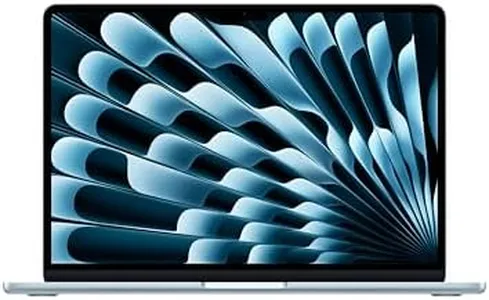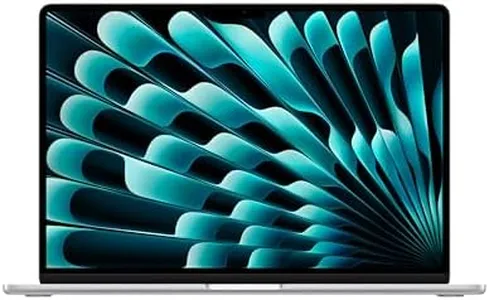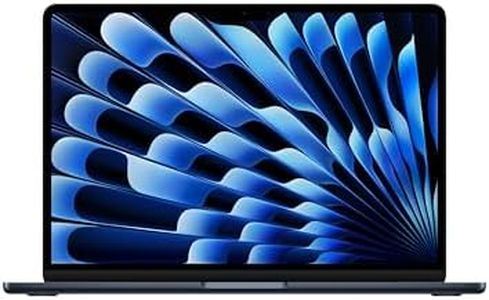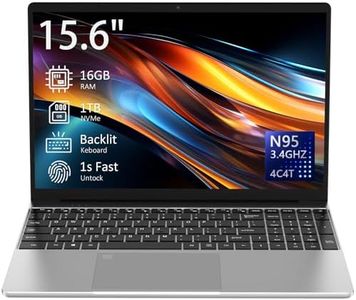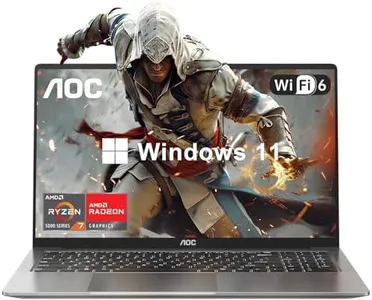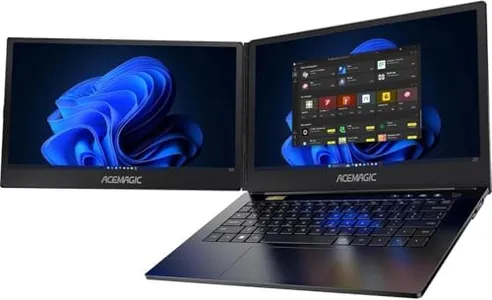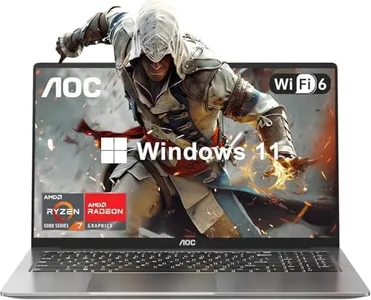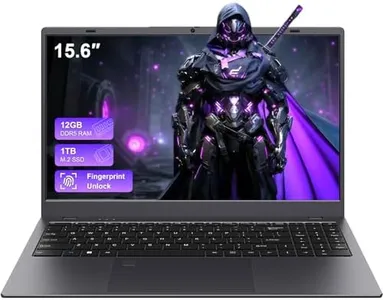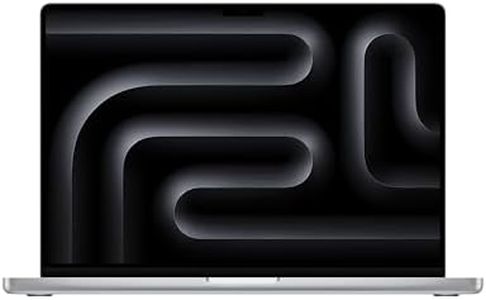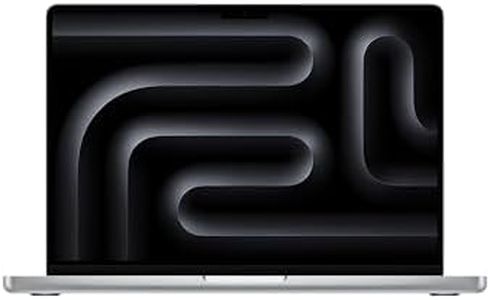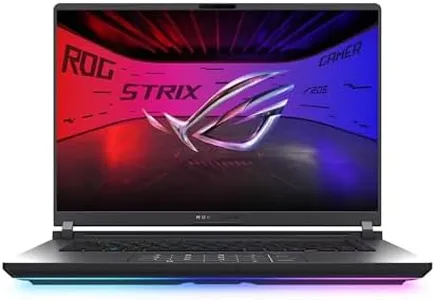10 Best Editing Laptops 2025 in the United States
Our technology thoroughly searches through the online shopping world, reviewing hundreds of sites. We then process and analyze this information, updating in real-time to bring you the latest top-rated products. This way, you always get the best and most current options available.

Our Top Picks
Winner
Apple 2025 MacBook Air 13-inch Laptop with M4 chip: Built for Apple Intelligence, 13.6-inch Liquid Retina Display, 16GB Unified Memory, 512GB SSD Storage, 12MP Center Stage Camera, Touch ID; Sky Blue
Most important from
4630 reviews
The Apple 2025 MacBook Air 13-inch with the new M4 chip is a strong choice for those needing a lightweight yet capable laptop for editing tasks. Its 10-core CPU and 10-core GPU offer fast and smooth performance, making activities like video editing and running multiple apps efficient without lag. The 16GB of unified memory helps with multitasking and handling larger files, while the 512GB SSD storage provides enough room for projects and quick file access. The 13.6-inch Liquid Retina display is bright and sharp, supporting 1 billion colors, which is great for photo and video work where color accuracy matters.
Battery life is impressive, offering up to 18 hours of video streaming, so you can work on the go without frequent charging. The laptop is also very portable, weighing just under 3 pounds, which adds to its convenience for mobile editing.
Connectivity options include two Thunderbolt 4 ports, a MagSafe charging port, and a headphone jack, which cover most peripheral needs, but some users might want more USB ports or an SD card reader for easier connection to cameras or external drives. While the integrated GPU is powerful for an ultrabook and supports hardware-accelerated video processing, it may not match dedicated graphics cards found in larger editing laptops when working with very complex 3D graphics or ultra-high-resolution video editing. The excellent 12MP camera and quality audio system are bonus features for video calls and content creation. This MacBook Air suits content creators who value a balance between performance, portability, and battery life, especially if they are already invested in the Apple ecosystem. However, heavy professional editors who rely on specialized graphics hardware might need to consider more powerful machines.
Most important from
4630 reviews
Apple 2025 MacBook Air 15-inch Laptop with M4 chip: Built for Apple Intelligence, 15.3-inch Liquid Retina Display, 24GB Unified Memory, 512GB SSD Storage, 12MP Center Stage Camera, Touch ID; Silver
Most important from
1632 reviews
The Apple 2025 MacBook Air 15-inch with the new M4 chip is a strong choice if you want a light and portable laptop that can handle editing tasks smoothly. Its 10-core CPU and 10-core GPU offer solid performance for photo and video editing, while the 24GB of unified memory helps keep multiple apps running without slowing down. The 512GB SSD provides decent storage space, though creative professionals working with very large files might need external drives. The 15.3-inch Liquid Retina display is bright and color-accurate, showing rich details and supporting over a billion colors—this is great for precise editing work. Battery life is impressive, lasting up to 18 hours, which means you can edit on the go without constantly searching for an outlet.
On the connectivity side, two Thunderbolt 4 ports and MagSafe charging cover most needs, but some users may find the limited port count restrictive if they use many accessories or external drives simultaneously. The integrated graphics are good for many editing tasks but may struggle with very heavy 3D rendering or specialized GPU workloads compared to dedicated graphics cards. Features like the 12MP Center Stage camera and high-quality speakers add value for video calls and content creation.
This MacBook Air blends power, display quality, and battery life effectively for general editing, especially if you appreciate Apple’s ecosystem. However, those needing extensive storage or powerful dedicated graphics might consider other options.
Most important from
1632 reviews
Apple 2025 MacBook Air 15-inch Laptop with M4 chip: Built for Apple Intelligence, 15.3-inch Liquid Retina Display, 16GB Unified Memory, 256GB SSD Storage, 12MP Center Stage Camera, Touch ID; Silver
Most important from
1632 reviews
The Apple 2025 MacBook Air 15-inch with the M4 chip is a strong choice for an editing laptop, especially if you value portability and battery life. Its 10-core CPU and 10-core GPU provide smooth performance for video editing, photo work, and running multiple apps at once. The 16GB of unified memory helps keep editing tasks fluid without lag. The 15.3-inch Liquid Retina display supports 1 billion colors and offers sharp, vibrant visuals, which is important when working with detailed photos or videos. Battery life is impressive, lasting up to 18 hours, so you can work on the go without constantly hunting for an outlet.
The 256GB SSD storage is on the smaller side for editing projects, which often require lots of space; users may need external drives or cloud storage to compensate. The integrated graphics, while capable, aren't as powerful as dedicated GPUs found in some editing laptops, so extremely heavy graphic workloads might run slower. Connectivity includes two Thunderbolt 4 ports and MagSafe charging, which cover fast data transfer and Mac-friendly power options, but there are fewer ports compared to some competitors if you need many external devices.
This MacBook Air benefits from macOS optimization and seamless integration with other Apple devices, which can simplify your workflow if you use iPhones or iPads. It is a lightweight, stylish, and efficient editing laptop ideal for creators who prioritize mobility, display quality, and battery life over maximum storage and dedicated graphics power.
Most important from
1632 reviews
Buying Guide for the Best Editing Laptops
Choosing the right laptop for editing tasks, whether it's video, photo, or audio editing, requires careful consideration of several key specifications. These specs will determine how efficiently and smoothly your laptop can handle demanding editing software and large files. Understanding these specs and how they align with your specific needs will help you make an informed decision.FAQ
Most Popular Categories Right Now
